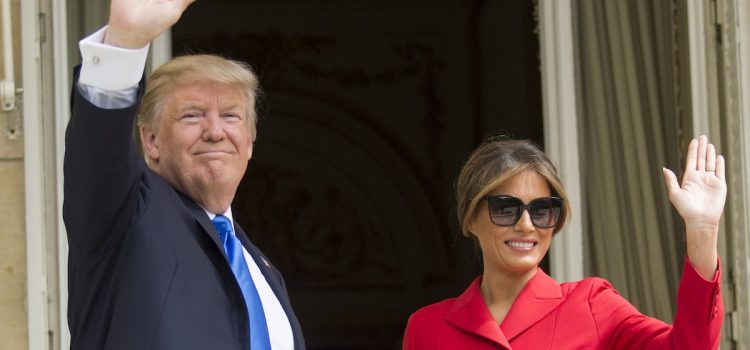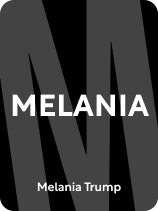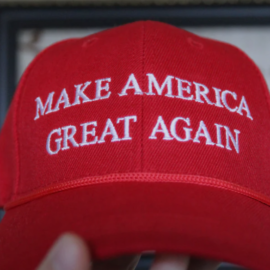

This article is an excerpt from the Shortform book guide to "Melania" by Melania Trump. Shortform has the world's best summaries and analyses of books you should be reading.
Like this article? Sign up for a free trial here.
What did Melania Trump prioritize during her time as America’s first lady? How did she respond to the major challenges that arose during her first tenure in the White House?
Melania Trump, as first lady in President Trump’s first term, focused on children’s well-being while managing White House renovations and participating in international diplomacy. She navigated numerous challenges while maintaining her commitment to public service.
Keep reading to discover how Melania’s role as first lady evolved through both triumphs and unprecedented national crises.
Image credit: Chairman of the Joint Chiefs of Staff on Flickr. Image cropped.
Melania as First Lady
We’ll discuss Melania as first lady in Trump’s first term, discussing her various activities, projects, and priorities and sharing her perspective on some of the challenges she faced during her time in the White House.
(Shortform note: In our guide, we refer to Melania Trump as Melania and to Donald Trump as Trump.)
(Shortform note: With a lack of constitutional guidance, the role of the first lady has evolved from a domestic focus to one of advocacy and influence in policy and politics. First ladies such as Dolley Madison and Mary Todd Lincoln used their positions to promote causes like social welfare and education. Over time, first ladies have assembled teams to support their initiatives. For example, Barbara Bush campaigned for improving literacy, while Michelle Obama focused on countering childhood obesity through her “Let’s Move!” initiative promoting healthy eating and exercise among children. First ladies have also often been seen as trendsetters in fashion and style, influencing public tastes.)
The Be Best Campaign
Melania launched the “Be Best” campaign on May 7, 2018, during her second year in the White House. The campaign focused on promoting children’s well-being and online safety, and addressing opioid abuse. The initiative’s emphasis on cyberbullying reflected Melania’s experience with online harassment of her son Barron.
As a part of the campaign, Melania engaged in discussions with tech giants like Facebook, Google, Amazon, Snapchat, and Twitter to explore ways to enhance online safety and reduce cyberbullying. She also collaborated with organizations such as the Family Online Safety Institute and the National PTA Legislative Conference to broaden the campaign’s impact, focusing on educating parents and children about safe online practices and fostering a healthier digital environment for youth.
To tackle opioid abuse, the campaign focused on raising awareness about the epidemic’s impact on families. Melania visited organizations, such as infant recovery centers, and participated in discussions with addiction and recovery experts. These efforts aimed to reduce stigma and promote education on prevention and recovery.
The “Be Best” campaign faced criticism for its name, as some questioned the clarity and grammar of the title, as well as perceived contradictions with President Trump’s contentious social media behavior, which often included insults and inflammatory language. Despite these challenges, Melania emphasized that the campaign was her priority, underscoring her commitment to promoting respectful communication and ensuring the safety of children.
Hosting & Renovations at the White House
As first lady, Melania embraced her responsibility to host and manage White House events with meticulous attention to detail. She highlighted the state dinner for French President Emmanuel Macron and his wife, Brigitte, as an example, personally overseeing every aspect—from decor to dining—with nods to both French and American culture through her choice of designers.
Melania’s role included planning diverse events, such as the Governor’s Ball and International Women’s Day, where she hosted a luncheon and spoke at the International Women of Courage Award Ceremony to highlight global women’s issues. Holidays were also busy, with events scheduled around Easter and Thanksgiving, and Christmas preparations beginning as early as July. On Valentine’s Day, Melania visited a children’s hospital, engaging in crafts and sharing treats with the patients.
Melania also undertook White House renovations in collaboration with designer Tham Kannalikham, focusing on finding the balance between historical preservation and modern updates. In addition to refreshing wallpaper and reupholstering furniture in the White House, Melania oversaw the design and construction of a new tennis pavilion at the White House, and she coordinated updates to Camp David. She writes that she also improved the White House Rose Garden, adding a new walkway for accessibility and an improved irrigation system. According to Melania, these efforts exemplified her commitment to enhancing the beauty and functionality of these historic spaces for future generations.
International Diplomacy
In May 2017, Melania embarked on her first major international trip with President Trump, visiting Saudi Arabia, Israel, Rome, Belgium, and Sicily. During this trip, she met with international leaders, such as King Salman in Saudi Arabia and Pope Francis at the Vatican, and visited cultural sites, including the Western Wall in Israel. In her diplomatic role, Melania also attended a state banquet with Queen Elizabeth II in London and a sumo wrestling tournament with Japanese Prime Minister Shinzo Abe in Tokyo. These activities reinforced international alliances and highlighted her engagement in cultural diplomacy.
In October 2018, Melania made a solo trip to Africa as part of her “Be Best” initiative, which focused on spotlighting global issues affecting women and children. In Ghana, she visited the Cape Coast Castle, a historical site significant for its role in the transatlantic slave trade, highlighting the importance of historical awareness and reflection. In Malawi, her visit to the overcrowded Chipala Primary School underscored the urgent need for more educational resources, aligning with her initiative’s emphasis on improving conditions for children. In Nairobi, Kenya, she spent time at the Sheldrick Wildlife Trust, where she visited baby elephants, drawing attention to regional conservation efforts and the importance of wildlife protection.
Melania emphasizes her commitment to supporting the US military with her surprise Christmas visit to American troops in Iraq in December 2018 and her stop at Ramstein Air Base in Germany. These visits were part of her broader involvement in military and veteran support.
Navigating Crises & Challenges
Melania writes that in times of crisis, her priority as first lady was to foster empathy for those impacted. For example, after the devastation of Hurricane Harvey in 2017, she recounts that she and President Trump coordinated relief efforts in Texas and Louisiana. And then again, following the Las Vegas mass shooting, Melania visited with victims and first responders.
(Shortform note: Melania’s support during crises, particularly following Hurricane Harvey, received a mixed reception from the public and those directly affected. Many appreciated her public service announcement urging Americans to donate and volunteer, as it highlighted the need for collective action in recovery efforts. Notably, she and President Trump committed to donating $1 million to relief organizations, including the Red Cross and Salvation Army. However, critiques emerged regarding the overall effectiveness of the federal response to the disaster, with some critics contending that while her presence was comforting, it didn’t translate into substantial systemic aid or significant policy changes. These critiques focused more on the broader federal response than on her personal contributions.)
Responding to Covid-19
The onset of the Covid-19 pandemic in 2020 marked a significant shift for Melania and the Trump administration. Initially learning about the novel coronavirus in December 2019, she witnessed its rapid spread from China to the United States. She cites the formation of the White House coronavirus task force and President Trump’s travel ban from China as life-saving measures.
| Early Response to the Covid-19 Pandemic The task force was established in late January 2020, with President Trump announcing its formation on January 29. Led by Secretary of Health and Human Services Alex Azar, the task force aimed to monitor, contain, and mitigate the virus’s spread while providing accurate health and travel information to the public. On January 31, the Trump administration imposed travel restrictions on foreign nationals who had been in China within the previous 14 days, marking an early response to the emerging crisis. While these actions were significant, their effectiveness in saving lives is a subject of debate among experts. Despite these early measures, the US faced considerable challenges in its pandemic response, particularly regarding testing capacity and coordination between federal and state efforts. Additionally, community transmission of the virus was likely already occurring by the time travel restrictions were enacted, suggesting that these measures alone didn’t prevent the virus’s spread within the United States. |
Despite the unfolding health crisis, Melania continued her first lady duties, including making a diplomatic visit to India amid safety concerns. As the pandemic’s severity became apparent, she implemented safety protocols in the White House, including suspending White House tours, requiring staff to wear masks, and allowing noncritical staff to work remotely. Even as she tested positive for the virus in October 2020, she writes that she remained focused on maintaining calm and providing support through public service announcements.
| Impact of the Covid-19 Pandemic The Covid-19 outbreak rapidly evolved into a public health crisis in the United States. By early October 2020, over 205,000 Americans had died from the virus, with millions more infected. The Trump administration faced criticism for its handling of the pandemic, particularly in the early stages. Despite receiving early warnings about the virus in January 2020, the Trump administration was slow to implement a comprehensive response, failing to follow established pandemic preparedness plans. This led to delays in critical areas such as testing, acquiring personal protective equipment, and coordinating a unified government response. The administration’s public messaging about the pandemic was often inconsistent and at times conflicted with that of public health experts. President Trump frequently downplayed the severity of the virus, creating a discrepancy between official statements and expert assessments. Additionally, the White House attempted to control information from health agencies such as the CDC by limiting their ability to communicate directly with the public. The White House further restricted CDC media briefings, preventing experts from openly discussing the dangers of Covid-19 with the media. These actions collectively contributed to a muddled public health message during a critical time. The pandemic response became a major issue in the 2020 presidential election. Polls indicated that many voters disapproved of Trump’s response to the crisis, which may have contributed to his electoral defeat. |
Addressing Racial Injustice: The Death of George Floyd
The police killing of George Floyd in Minneapolis on May 26, 2020, sparked nationwide discussions on police brutality and racial injustice. Melania notes that, despite the firing of the officers involved, public demands for justice and systemic reform continued to intensify across the country. She says she expressed her support for peaceful protest, a cornerstone of American democracy, but also her concern about the violence and destruction that accompanied some demonstrations, noting what she described as the inflammatory rhetoric from some Black Lives Matter leaders, which contributed to the unrest.
(Shortform note: Three days after Floyd’s death, Melania tweeted her support for peaceful demonstrations while condemning violence. She stated, “Our country allows for peaceful protests, but there is no reason for violence,” and urged the nation to focus on “peace, prayers & healing.” Additionally, she extended her condolences to Floyd’s family. This was her first public comment on the issue. Her remarks followed a tweet from President Trump on the same day, stating, “when the looting starts, the shooting starts,” which was flagged by Twitter for potentially glorifying violence.)
Melania recounts that on May 29th, three days after the death of Floyd, protests demanding justice and reform intensified outside the White House, with demonstrators gathering in Lafayette Square, a public park across the White House. As tensions escalated, some protesters attempted to breach the White House gates, prompting the Secret Service to take the precautionary measure of escorting the Trump family to an underground bunker.
(Shortform note: Melania’s discussion of Floyd’s death in her memoir has come under criticism for several reasons. Notably, she omits Floyd’s name, referring to him only as a “Black Minneapolis resident.” Additionally, she dedicates only three paragraphs to the circumstances of his murder, while spending several pages describing the protests that followed, particularly those near the White House, focusing more on her own experience during the protests than the implications of Floyd’s death for racial justice in America.)
Reflecting on the experience, Melania highlighted the importance of constructive dialogue over violence. She expressed concerns about erasing part of US history, specifically mentioning the removal of monuments and statues, emphasizing the need to learn from past mistakes to avoid repeating them. Melania writes that respect and understanding among the diverse groups within the US are critical for a healthy democracy.
| First Ladies as Advocates for Racial Equality While Melania’s response to the murder of Floyd focused on calls for peace and unity, she didn’t explicitly discuss the role of racism in his death. However, historically, despite their non-elected status, first ladies have often used their positions to advocate for racial equality through symbolic acts and partnerships. In the late 1800s, Lucy Webb Hayes invited Frederick Douglass, a former enslaved person and leading abolitionist, to White House receptions during a time of high racial tension. Eleanor Roosevelt partnered with Dr. Mary McLeod Bethune, an influential African American educator, to promote racial equality, and she famously resigned from the Daughters of the American Revolution when they barred Marian Anderson, a Black opera singer, from performing at Constitution Hall, helping instead to organize Anderson’s iconic performance at the Lincoln Memorial. |
Reflecting on January 6
Acknowledging the deepening divisions in the country following Floyd’s death, Melania also discusses what she witnessed on January 6, 2021.
Melania recounts that she had been working in the White House when she learned of the unrest at the Capitol building as protests turned violent during the election results certification. She explains that she was initially unaware of the situation’s gravity but later received an inquiry from her press secretary, asking if she wanted to publicly denounce the violence. Consistent with her past stance against violence, she says she condemned the actions once fully informed and stressed the importance of resolving disputes without aggression. The day’s events led her to reflect on her role in a deeply divided nation, but she maintained hope for the country’s future unity.
(Shortform note: The account of former chief of staff Stephanie Grisham contradicts Melania’s recollection of events on January 6, 2021. While Melania claims she was initially unaware of the situation’s gravity, Grisham states that she texted the first lady asking if she wanted to condemn the violence. According to Grisham’s testimony, Melania refused to tweet a condemnation. Furthermore, Grisham reported that, while the violence was unfolding at the Capitol, Melania was occupied with a photoshoot for a new carpet in the White House residence. This contrasts sharply with Melania’s later statement in a Fox News interview that she was “unaware” of what was transpiring at the Capitol as she was “fulfilling one of my duties as first lady.”)

———End of Preview———
Like what you just read? Read the rest of the world's best book summary and analysis of Melania Trump's "Melania" at Shortform.
Here's what you'll find in our full Melania summary:
- Melania Trump’s journey from Slovenia to the White House
- The challenges Melania faced as First Lady of the United States
- Never-before-heard anecdotes from Melania






